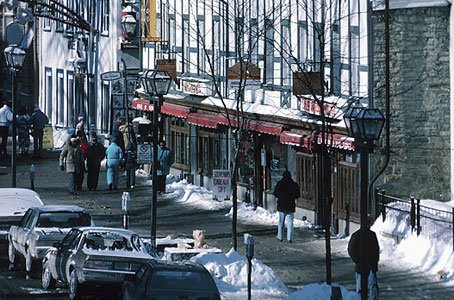Falls account for more than one million injuries in the United States annually. The most common type of walking accident is the slip and fall. That’s the type of fall that happens when you fall while walking on a sidewalk, in a parking lot or street not clear of snow or ice.
“The most dangerous part of a snow storm may be the day or days following the snow when sunny skies and higher temperatures during the day melt the snow, and lower temperatures at night refreeze the melted snow, creating a cycle that could continue for days, a hazardous condition for walking and driving” said Martin B. Tirado, CAE, Executive Director, Snow & Ice Management Association (SIMA).
SIMA, the North American nonprofit organization representing the snow removal industry, has these tips for safe winter walking:
TIP #1: Wear proper footwear. Proper footwear should place the entire foot on the surface of the ground and have visible treads. Avoid a smooth sole and opt for a heavy treaded shoe with a flat bottom.
TIP #2: Watch your balance. Many slip and falls occur in the days after a snowfall because of melting and refreezing conditions that create ice.
TIP #3: Plan ahead. While walking on snow or ice on sidewalks or in parking lots, walk consciously. Instead of looking down, look up and see where your feet will move next to anticipate ice or an uneven surface. Occasionally scan from left to right to ensure you are not in the way of vehicles or other hazards.
TIP #4: Conditions nice for ice. Watch for areas where melting and refreezing may persist for weeks. These areas may include parking lot drainage areas, roof gutters, piles of snow where melting and refreezing can continue for weeks. Also posing threats are areas where snow melts from overhangs and then refreezes, where melted water may pool between parking spaces or buildings, or walkways with trees dripping water on sidewalks.
TIP #5: Anticipate black ice. Be weary of thin sheets of ice that may appear as wet pavement (black ice). Often ice will appear in the morning, in shady spots or where the sun shines during the day and melted snow refreezes at night.
TIP #6: Walk steps slowly. When walking down steps, be sure to grip handrails firmly and plant your feet securely on each step.
TIP #7: Enter a building carefully. When you get to your destination such as school, work, shopping center, etc., be sure to look at the floor as you enter the building. The floor may be wet with melted snow and ice.
TIP #8: Be careful when you shift your weight. When stepping off a curb or getting into a car, be careful since shifting your weight may cause an imbalance and result in a fall.
TIP #9: Avoid taking shortcuts. Shortcuts are a good idea if you are in a hurry, but may be a bad idea if there is snow and ice on the ground. A shortcut path may be treacherous because it is likely to be located where snow and ice removal is not possible.
TIP #10: Scan the environment. Be careful about what you walk under.
Injuries also can result from falling snow/ice as it blows, melts, or breaks away from awnings, buildings, etc.
Following these tips will help ensure that you survive the snow and ice season safely. Founded in 1996, the Snow & Ice Management Association is the North American trade association for snow removal professionals.
For more snow and ice removal tips, visit: www.sima.org.
